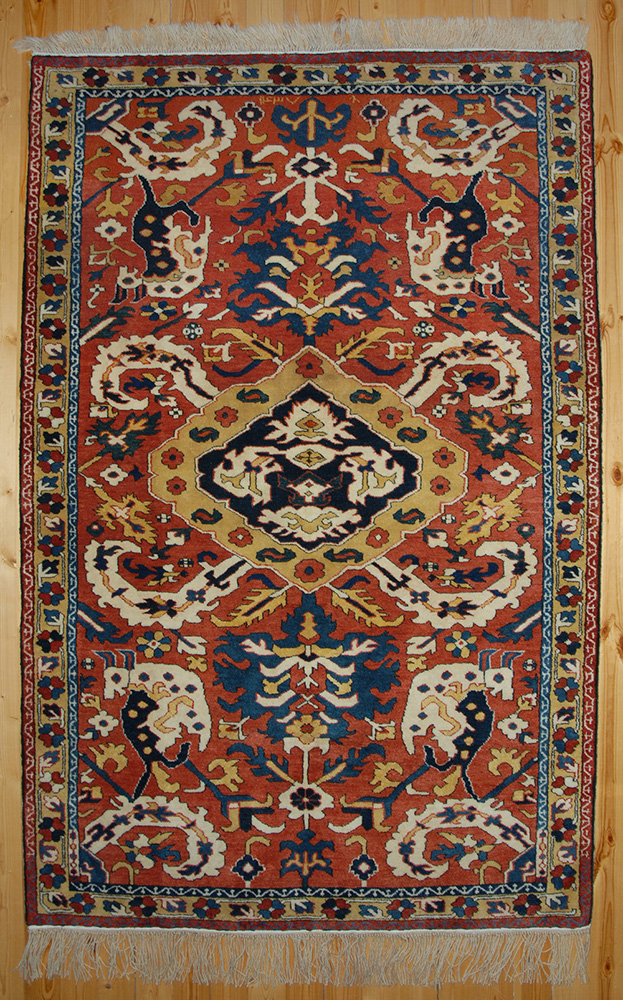|
Reconstruction of the
XVIII century Azerbaijan 'Animal' carpet
Code: KRACX02
Size (metric): 136x207cm
Size (ft): 4'5"x6'9"
Area: 2.81 m2
Density: 170 000 knots per square meter, ~500 000 knots
Weaving period: three months
Colors (9): light madder red (two shades, which creates a
slight abrash on the field), green,
dark aqua green, medium blue, navy blue,
midnight blue, yellow, natural ivory, natural
brown.
Dyes: 100% natural dyes:
madder,
weld
(Reseda Luteola),
woad/ndigo,
pomegranate skins,
walnut husks,
natural brown sheep wool, natural ivory sheep wool
Materials:
all wool - handcarded and handspun wool for pile, ivory wool warps and
ivory wool wefts
Handwoven in Azerbaijan
Weaver's name:
Khatira
Design:
A dark blue medallion outlined in yellow, and
from which lancet-like leaves spring, dominates the brilliant red ground.
Near the four corners, can be seen vertical animal fights, similar to the
horizontal animal representations found in Safavid carpets. There is a
blue and red flower-and-tendril border on a yellow ground.
dated AH 1437 (2016)
The early example,
which was first published by Ulrich Schurmann as plate 38 in his
Bilderbuch fuer Teppichsammler in 1960 and again in 1974 as
plate 93 in his ‘Caucasian Rugs’.
There is a
tamga of Afshar tribe on the top part of the central field.

|



.jpg)
